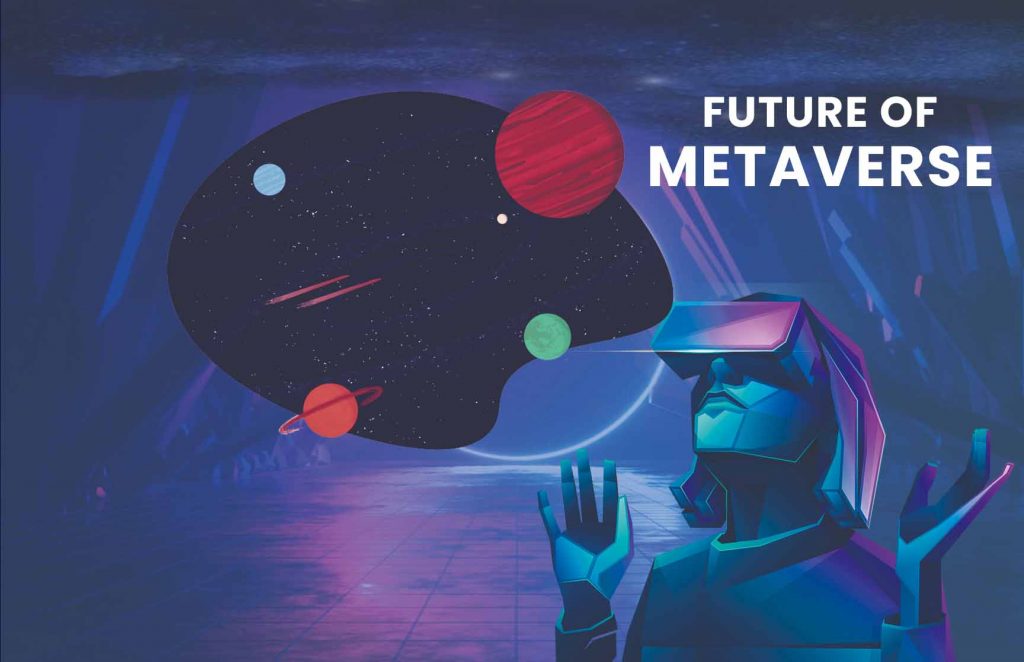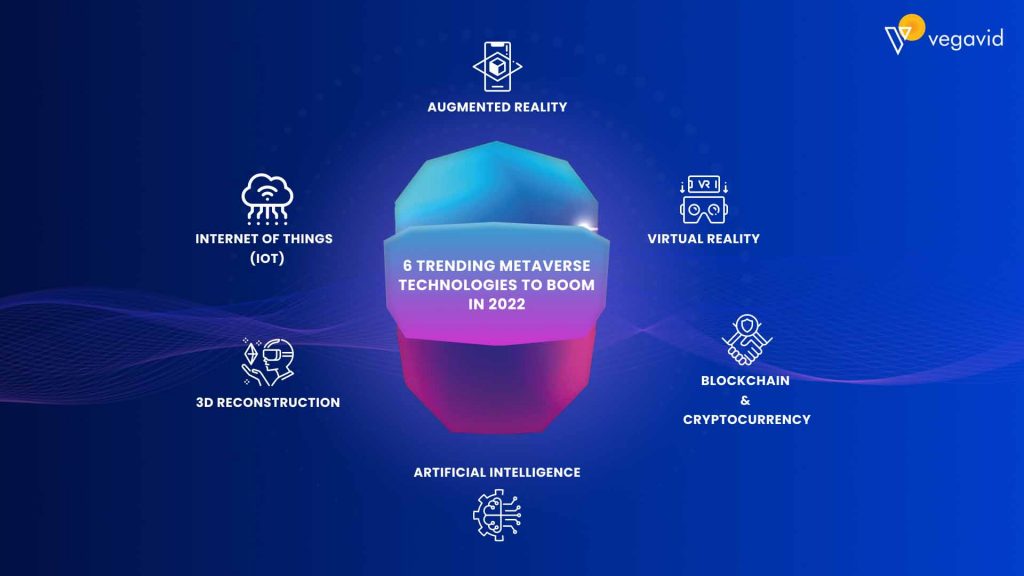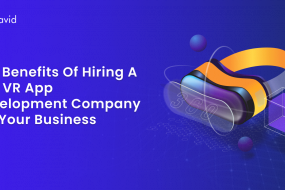Ever since Facebook rebranded itself as Meta, discussions, and debates on Metaverse-related topics have been doing the rounds.
What is Metaverse technology?
The Metaverse refers to an envisioned next phase of interconnected virtual worlds focused on shared immersive experiences. At its core, Metaverse technology aims to fuse elements of virtual reality, augmented reality, and the internet to develop persistent and customizable digital worlds. By integrating these technologies, the Metaverse promises ubiquitous access to realistic virtual spaces that can be shared across interconnected platforms.
Foundational Metaverse technologies include mixed reality devices, high-speed networks, artificial intelligence, digital simulations, and blockchain infrastructure. Mixed reality headsets like the Oculus Quest and emerging AR smart glasses use VR and AR interfaces to overlay digital graphics seamlessly within physical environments. 5G cellular and soon 6G wireless networks will provide the bandwidth required to deliver consistent low-latency connectivity at scales demanded by the Metaverse.
AI technologies are also crucial to power natural human-computer interactions and realistic simulations. Digital twin modeling replicates everything from city infrastructure to molecular simulations virtually. Blockchains enable open platforms where digital property and monetization of virtual works are transparently exchanged via cryptocurrencies. Cloud computing infrastructure from Amazon Web Services, Microsoft, and Google modularly provisions vast processing capabilities on-demand globally.
Together, these converging technologies aim to actualize a fully shared Metaverse ecosystem by 2030 according to investor Mark Zuckerberg of Meta. Current estimates forecast the global Metaverse market expanding from $21 billion in 2020 to over $614 billion by 2028 at a compound annual growth rate of 42.8%, according to Grand View Research.
By 2024, Metaverse technology adoption is projected to drive demand for 12.1 million AR and VR developer jobs worldwide, reports Engineering.com. Hardware accelerated with over 2 billion mixed reality devices in use by 2024, according to CCS Insights. Meanwhile, 5G subscriptions are anticipated to reach 3.5 billion globally in 2023 says GSM Association to support more Metaverse applications.
As Metaverse technologies continue expanding capabilities through ongoing collaboration between innovators, the vision of seamlessly blended virtual and physical experiences grows increasingly tangible. Early piloting across education, games, design, and more points towards immense promise if guided prudently to uplift humanity.
The Future Of Metaverse

The Metaverse represents an evolving concept that brings together emerging technologies in new ways to inspire visions of shared virtual worlds enhancing how we live, work, and play. While development remains in its early stages, significant progress is being made across multiple areas that point towards incredible potential over the next decade and beyond. Here is an exploration of projections for the Metaverse’s future trajectory:
By 2024, Metaverse technology is expected to attract over $21 billion in hardware sales according to Emergen Research, driving mixed reality devices like headsets into hundreds of millions of homes worldwide. Devices are anticipated to reach unprecedented levels of performance with lifelike graphics, haptic feedback, and eye/hand tracking for natural interactions. This widespread consumer adoption will see the Metaverse increasingly supplement and blend with physical reality.
Advanced networking will be critical to delivering this futuristic Metaverse experience. 5G subscriptions are anticipated to reach 3.5 billion globally by 2023 according to GSMA, laying the foundation. Meanwhile, an early 6G rollout beginning 2028 according to Intel aims to support 10 gigabit wireless speeds enabling 100x faster data rates than 5G crucial for immense Metaverse environments.
Another factor shaping the Metaverse will be artificial intelligence. By 2024, Deep Learning is projected to achieve unprecedented levels of simulating human cognition for natural conversations, problem-solving, and virtual assistants according to Anthropic. This means ubiquitous AI capabilities within virtual worlds seamlessly assist inhabitants.
Meanwhile, trends emerging in fields like digital twin technology point towards comprehensive real-time virtual modeling of entire cities, infrastructure, and complex systems by 2030 according to Gartner. This permits urban planning, emergency coordination, and scientific experimentation at scales unimaginable today.
As a result of these evolving converging technologies, within 10 years the Metaverse may see its first billion regular users according to JP Morgan, forming vibrant shared digital economies where work and play increasingly blend as immersive virtual spaces continue complementing physical reality. If guided responsibly, the Metaverse promises exciting new frontiers for productivity, creativity, and human connections far beyond today’s expectations.
6 Amazing Metaverse Technologies To Trend in 2024
The Metaverse envisions a fully immersive successor to today’s mobile internet. As the concept evolves, certain enabling technologies are projected to experience breakout growth over the next year propelling this innovative digital frontier further. Here we explore 6 trends likely to drive significant Metaverse advances throughout 2023 and beyond based on forecasts from tech analysts and organizations at the cutting edge.

1. Mixed Reality Headsets
Augmented and virtual reality devices fuse digital views directly into our perception of reality. Major hardware releases this year aim to bring mixed reality mainstream. Meta teases Project Cambria – a high-end VR/AR headset debuting in 2023 promising radical form factor improvements. Meanwhile, Apple reportedly enters the space with its first headset introducing shared collaborative experiences. These advancements lower entry barriers attracting widespread consumer and enterprise adoption within the Metaverse.
2. 5G & 6G Networks
Next-gen Ultra-Wideband wireless networks delivering multi-gigabit speeds are foundational for ubiquitous low-latency access to compute-intensive Metaverse applications requiring real-time syncing of immense volumes of HD multimedia data across extended spaces. To actualize the fully shared Metaverse experience at impressive scales, telecom companies continue rolling out 5G which a Gartner report expects will power 25% of global internet traffic by 2024, with 6G on the horizon further expanding bandwidth capabilities.
3. Artificial Intelligence
AI plays a vital role in enhancing immersive Metaverse interactions with human-level intelligence. Companies including Nvidia and DeepMind double down on research unlocking more natural communication modalities within virtual worlds. Startups apply Deep Learning techniques toward tasks like virtual companion assistants, personalized product recommendations, on-device translation services, and simulated economies. By 2024, generated digital content is estimated to contribute 10% of the $2 trillion global content market according to PwC, redefining creativity.
4. Digital Twins & Simulation
Simulating physical spaces digitally permits modeling new scenarios as “what if” experiments. Industries like real estate, urban planning, emergency response, energy, and manufacturing use digital twins to fine-tune efficiency or train for unlikely situations in augmented reality workshops accessed through the Metaverse before physical builds. Companies like Anthropic develop general-purpose simulation tools empowering entrepreneurs to prototype innovative Metaverse services at low risk from any location.
5. Blockchain &Cryptoeconomics
Blockchains enable open ecosystems where creators directly monetize virtual works and parties exchange scarce tokenized digital property transparently. Projects like Axie Infinity demonstrate the commercial promise of “play-to-earn” models within gaming. The general adoption of token standards, decentralized identification frameworks, and interoperability initiatives during 2023 lay the groundwork for a bustling Metaverse marketplace economy harnessing crypto incentives to fairly reward participation.
6. Cloud Computing
Massively scalable cloud infrastructure provides the processing power and data centers required to serve the Metaverse globally in real time. Technology giants like Amazon Web Services, Microsoft Azure, and Google Cloud Platform carve out dedicated Metaverse divisions ensuring their virtualization and edge computing offerings can accommodate sprawling digital worlds hosting hundreds of millions. These platforms help optimize the complex computing demands which some estimate may reach over 1,000 times today’s total internet traffic as virtual societies increasingly mirror reality.
As 2023 unfolds, these 6 converging next-generation technologies are poised to take the Metaverse concept from imagination toward materializing its first vibrantly animated, persistently connected societies. Continued responsible innovation across hardware, networks, AI, simulation, economics, and the cloud enables the Metaverse’s full promise for work, play, and human progress. Exciting times lie ahead as skills and imaginations collaboratively push boundaries.
Conclusion
While still in its infancy, the Metaverse represents a profound technological horizon with the potential to reshape global interaction for generations to come if guided sustainably. Developments emerging across mixed reality, high-speed networking, decentralized infrastructures, digital twin modeling, and cloud-based scaling signify its emergence accelerating. Joint efforts between creators, policymakers, and society to actualize Metaverse networks serving humanity’s highest good bode well for the future. With care and reason applied, new frontiers lie waiting.











